Proceedings of scientific Works by marina kavtaradze
ტრადიციული მრავალხმიანობის პირველი საერთაშორისო სიმპოზიუმი, მოხსენებების კრებული, 2003
The First International Symposium on Traditional Polyphony, Proceedings, 2003
George Chubinashvili National Research Centre for Georgian Art History and Heritage Preservation, 2014
PIROSMANI AND MUSIC
There are artists, whose work, together with their personality and ... more PIROSMANI AND MUSIC
There are artists, whose work, together with their personality and related artistic image, influence a later generation and serve as inspiration for creating a range of artworks. Niko Pi-rosmanashvili is such a phenomenon. A number of music compositions belonging to different genres are related to his name (S. Nasidze’s Symphony No5, N. Svanidze’s Chamber Oratorio, A. Matchavariani’s Ballet, A. Chimakadze’s Music for a Play, etc.).A discourse presented in this paper reveals different aspects of Pirosmani’s relation to mu-sic: I – What was the "melosphere" surrounding him like; II – How was Pirosmani’s artistic image reflected in music.
GESJ: Musicology and Cultural Science 2020|No.1(21), 2020
The contemporaries of dramatist Avksenti Tsagareli (1857-1902) probably never imagined how popula... more The contemporaries of dramatist Avksenti Tsagareli (1857-1902) probably never imagined how popular his play "Khanuma" (1882) would be in the 20 th century and most importantly, how many times it would be changed on the stage and screennames of the personages, development of the story and music. Interpretation of the play like a mirror reflected the culture and history of the 20 th century Georgia and not only Georgia. Basing on the comparative method the paper discusses musical interpretations of Avksenti Tsagareli's "Khanuma" during a century in the context of their creation time and its five lives:
NATIONAL ANTHEM AS A GENRE OF POLITICAL DISCOURSE AND ITS SEMIOTICS, 2023
The paper focuses on the peculiarities of national anthem as a genre of political discourse, whic... more The paper focuses on the peculiarities of national anthem as a genre of political discourse, which creates a semiotic
field of political language using metaphors, affects the listener’s emotions by music and consciousness - by words,
and identifies it with nation and state.
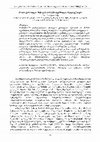
GESJ: Musicology and Cultural Science No.1(2) [2006.06.30] GESJ: Musicology and Cultural Science, 2006
The paper considers the peculiarities of modern Georgian music, which are provoked by the estheti... more The paper considers the peculiarities of modern Georgian music, which are provoked by the esthetics of postmodernism. Georgian postmodernism greatly differs from the western one, where it is a result of long dialectical development. In Georgian music it found a rather vast and fruitful soil. Its reflexes are found in the creative works of many composers (inter- textuality, double coding, eclectic nature, esthetics of ,,principium ludi”, application of genre model of ,,pastiche” and others).
Proceeding from the forms and dynamics of expression of these signs, three various generation composers were considered. These are the peaces by Giya Kancheli, Ioseph Bardanashvili and Zurab Nadareishvili, the adequate interpretation of the essence and significance of which is available only in the context of postmodernistic culture.
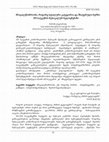
GESJ: Musicology and Cultural Science 2012 | No.1(8), 2012
Music of XX century composers is marked out by use of verbal languages with different meanings as... more Music of XX century composers is marked out by use of verbal languages with different meanings as follows: 1) traditional, substantive implication; 2) secondary semantics, as with a mean for enriching in terms of intonation; 3) implication of “symbol”, “sign”; 4) phonic-coloristic semantics; At the same time, composers use not only one, but several languages in the same composition, which gives rise to multilingualism.
There are a number of compositions created in different languages, including foreign languages in early XIV-XVII, as well as in XX-XXI centuries. In the light of the set issue – “linguistic polyphony” showing different aspects of multilingualism in creative works of XX century composers, including Georgian composers (Gia Kancheli, Iosef Bardanashvili, Zurab Nadareishvili) will enable us to see specifically how the above-mentioned prominent artistic ideas of XX century are realized in them.
INTERPRETATION OF FACTS AND EVENTS IN THE HISTORY OF MUSIC (FROM THE HISTORY OF TBILISI CONSERVATOIRE), 2018
INTERPRETATION OF FACTS AND EVENTS IN THE HISTORY OF MUSIC (FROM THE HISTORY OF TBILISI CONSERVAT... more INTERPRETATION OF FACTS AND EVENTS IN THE HISTORY OF MUSIC (FROM THE HISTORY OF TBILISI CONSERVATOIRE)
The paper aims to discuss the existence of two conservatoires during the First Democratic Republic of Georgia in Tbilisi and tries to find out cause and effect relationship between events and things. The present study is an attempt to see and interpret history of the second conservatoire in a new light, which was based on national interests.
MUSIC IN THE CONTEXT OF TOTALITARIAN CULTURE (ON THE EXAMPLE OF GEORGIAN MUSIC OF THE 30S OF THE XX CENTURY), 2020
The article attempts to show the formation process of the political language in Soviet culture ba... more The article attempts to show the formation process of the political language in Soviet culture basing
on the ideological discourse and to reveal the key factors of particular historical epoch, which
played crucial role in the formation of musical culture, as a constituent of the totalitarian system.
The Soviet Government ensured the development of culture in which artists had to act only within
the boundaries of the forms and ideas permitted by the existing locked system. Art, as a representer
of Culture became an indicator of the anomalies generated by totalitarianism. The afore-mentioned
processes are discussed on the example of Georgian musical culture of the 1930s.
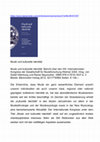
Religion und neue georgische klassische Musik im totalitären Staat, 2012
Religion and new Georgian classical music in a totalitarian state
The paper, based on a report... more Religion and new Georgian classical music in a totalitarian state
The paper, based on a report at the World Congress (2004), for the first time touches upon the attitude of Georgian academic music to religion in the 20th century.. Our age is characterized by the rebirth of religious consciousness, of spirituality in the various branches of art, including music. Religiosity as a quality of the human spirit belongs on the one hand to the spiritual and on the other hand to the moral sphere of man. Therefore, when discussing the religiosity of new Georgian music, I have in mind not only its genres and genres, but spirituality in general, which reflects eternal moral and ethical approaches. This is traditionally associated with religiosity and also appears in secular music.
Under the atheistic pressure of the Soviet Union, religion was a taboo. While 'spirituality' - reflecting the bright, the sublime, the eternal categories - was equated with forms and genres, traditional musical and cultural values emerged in the bosom of the general Christian and Georgian Orthodox Church. On the other hand, the secular consciousness of 20th century Georgian music expressed a traditional-religious experience that differed from the purely cultic-church one. This consciousness was characterized by an emotional perception of the religious experience, which arose in the core of personal ideas and in traditional terms went beyond the boundaries of religious aesthetics.
From the perspective of the 21st century, a relative periodization can be observed with regard to the relationship to religion in Georgian compositional work of the last century, which generally coincides with the processes taking place in the post-Soviet republics.

L’Europe et le Caucase., 2012
The subject of this article is the problem of national identity of Georgian music in the multicul... more The subject of this article is the problem of national identity of Georgian music in the multicultural environment on the example of urban music, more specifically on the example of Tbilisi music. My aim is to show: a) what Georgian urban musical culture represents, more specifically on the example of Tbilisi music, b) what were its specific characteristic features and how the sense of identity of the society was formed in the multicultural space of the city. It is known that in music there are several systems of musical thought. From the typological point of view, two global systems are recognized, one of which is based on polyphony, the second on monody; symbolically, the first identifies with European musical culture, the other with Asian musical cultures (Middle East, India, China, etc.). From this point of view, the Caucasus is important as a meeting place of typologically different musical cultures, of diverse universes. Among them, Georgian culture holds a special place, in which the archetypes of Western and Eastern musical thought are clearly revealed. Identity is the psychic ability of man to express in a concentrated way what he identifies with – nationality, tradition, language, culture, religion, profession, different social or political strata of society. Among them, the concepts of “national tradition”, “collective memory” are most often associated with the concept of identity. Throughout the centuries, polyphonic singing and hymns represented for Georgians “the symbolic culture” determining their identity.1 While monody, deeply rooted in Georgian musical life, presented itself as “the culture of consumption”. From this point of view, the urban song, more specifically, the so-called “songs of old Tbilisi”, is a special phenomenon as a result of the historical and cultural thinking of different eras and the dialogue of cultures, which played a significant role in the development of the new Georgian professional music. Tbilisi as a multicultural city Tbilisi is an eclectic city, to which a synthesis of cultures and a weak line of demarcation between the traditional and the contemporary give a special individualism, which, in turn, is conditioned by the multiculturalism of the city. The ethnic diversity of the population of Tbilisi, multiconfessionalism and internationalism have always created the charm and attractiveness of the city. The culture of Tbilisi, on the border between Europe and Asia, is distinguished by its “polyphonic” character, which means not a simple coexistence of cultures and subcultures, but their diffusion and dialogue between them.
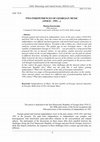
GESJ: Musicology and Cultural Science. , 2021
Georgia gained and restored its independence twice in the past century (1918/1921 and from 1991 t... more Georgia gained and restored its independence twice in the past century (1918/1921 and from 1991 to this day). Over the century the two-way path from independence to independence was difficult and heterogeneous with intertwined causal connections in socio-political and cultural spheres. Freedom is like a litmus test, which reveals and catalyzes certain processes. The golden age of new Georgian music-the first republic of independent Georgia in 1918-1921-was preceded by a long period that prepared this rise in musical culture. At one glance, similar processes preceded musical culture of the second independence. First of all this was the path of reforms in different directions, including the sphere of education, music professionalization. Main reason for the not-so-insignificant success of the reforms was the consolidation of the political and public spectrum, active public participation in the process and a well-thought transformation of the inherited ugly system. In this context the paper discusses: what challenges did the musical culture of the Democratic Republic face? What was the path like it took before gaining independence? What were the features of the idea of Georgian nationalism? How did these two stages of Europeanization/globalization take place in the country, whose musical culture was based on a different type of professionalism before the 19th century? What does independence mean in music?
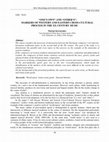
The report considers the processes of interaction between the European composer's art and non... more The report considers the processes of interaction between the European composer's art and non-European traditional music in the second half of the XX century. The goal of the study is to demonstrate the parallel and cross topics in this process on the example of the musicians of eastern tradition. If the composers of western tradition integrated the eastern poetry, symbolism and philosophical wisdom, the composers of East Asian countries actively mastered the laws, genres, forms and advanced ideas of the European music composition. The process of mixing, extrapolation and synthesis of the western and eastern cultural traditions in the post-modernist epoch gave rise to the new cross-phenomenon, which made the identification of the markers of the national identity even more difficult in the system of cross-cultural associations. On the background of the presented problems, the report focuses on such events, as World music and Asian avant-garde.
Georgian culture has developed in close connection with foreign cultures. Consequently, Georgian ... more Georgian culture has developed in close connection with foreign cultures. Consequently, Georgian art created its individual image at the crossroads of Eastern and Western cultures. Georgia also had intensive cultural contacts in the 20 th century, a great part of which was spent in the Soviet "brotherly" family; what happened when it was found in a closed space? When under totalitarian conditions, communication was allowed only with the brotherly republics? What conditioned its image? In this context it is interesting how the Eurasian perspective of multicultural Georgia was changing and how the problems of compatibility of multicultural and transcultural oneness was managed.

The question of the interrelation between monophony and polyphony exceeds the bounds of the probl... more The question of the interrelation between monophony and polyphony exceeds the bounds of the problems of one musical culture and is of universal character. The discussion presented in the paper is targeted at 1) bringing forward the general philosophical and cultural-historical aspects of monopho-ny and polyphony, especially in their west European manifestation and 2) along with that our goal is to single out some questions in Georgian sacred music associated with the former. Within the limits of one paper it is impossible to give an exhaustive analysis of the above prob-lem, therefore the contentions suggested in this report may be used as subjects for further discussion. The thing is that west European polyphony is a musical projection of man’s individuality of a definite type. Polyphony, as such, is based on the simultaneous sounding of several different voices, which quite obviously is not an achievement of only European culture. In its wide meaning it is at-tested in many countr...
Papers by marina kavtaradze

MUSICOLOGICAL RESEARCH #1 (1), 2010
The Paper discusses creative work of Joseph Bardanashvili, composer,
who equally belongs to Israe... more The Paper discusses creative work of Joseph Bardanashvili, composer,
who equally belongs to Israeli and Georgian musical culture.
From the national style standpoint, Bardanashvili’s style is a firstborn
of two cultures – Georgian and Jewish, and equally develops
traditions of these cultures within his own creative style. During his
first period of creative work, he establishes the attributes of national
Jewish culture on the foundation of Georgia’s cultural traditions. Whilst,
in Israel’s multi-cultural environment Bardanashvili naturally brings in
his creativity, which is characterized by different national traditions,
and synthesis of European, Asian and other valuable possessions.
Joseph Bardanashvili is one of the composers, where a postmodern
intertextuality and opposition –`Own-Another’s~ – in his creative
work transformed not into inter-style (among them national styles),
but at the level of relationships between historical types of culture -
characteristic to XXI century.
It is true that it was Israel to open its ways to Bardanashvili to
world recognition, however, Georgia remains as a second homeland
to the composer always emerging a feeling of nostalgia. “I don’t want
to be considered as a past composer. I hope to remain in Georgian
music” – these words belong to the composer, who continues
the 26-century-old tradition of relationships between Georgian-Jewish
cultures with his creations.
MUSICOLOGICAL RESEARCH, 2010
The article deals with the problem of style, as a system of signs in
postmodern music for which u... more The article deals with the problem of style, as a system of signs in
postmodern music for which unlike avant-garde music, is characteristic
mixing of old and new forms and categorically refuses the hermetic
sealing of creative process.
The goal of the article is to reveal stylistic traits conditioned by the
esthetics of post- modernism in modern Georgian music. Examples
are brought from the musical pieces of Gia Kancheli, Joseph Bardanashvili,
Zurab Nadareishvili and others.
The new semiotic essence of post- modern musical text with double
codes demanded from the authors ready-made materials of semantic
meaning, which accounts on its simultaneous perception on
different levels. In the article the problems like inter text, new eclectics,
double coding, play on styles and genres, pastiche etc are discussed.

შავი ზღვა როგორც ლიტერატურული სივრცე და ნაციონალური/კულტურული იდენტობის ფორმირება . The Black Sea as a Literary Space and Formation of National/Cultural Identities, 2019
Each epoch interprets antiquity in the accordance to own
problems and cataclysms; this is why, at... more Each epoch interprets antiquity in the accordance to own
problems and cataclysms; this is why, at various times, different mythological characters and plots dominate in artistic interpretation, which is allowed by the polysemy and variance of myth.
The story about Medea and the character of the princess of Colchis’,
distinguished by the power of psychological influence, has been the source
of inspiration for many artistic works. Starting from Euripides’ interpretation
and Ovidius’ Medeae Medea Forem (I will be Medea), up to Seneca’s
remark Medea fiam (I will become Medea) and Medea nunc sum (Medea
from now on) with which the future vision of this character has been programmed over the centuries.
For artists Medea is one of the most attractive and mysterious characters
in old Greek mythology and dramaturgy for her dual nature (half-goddess
and human).
The article attempts to outline how, over the time, the interest to Medea’s
character changes in music in the wake of literature and what the aplitude of its modifications is in the operatic genre. If the 17th-18th century operas
mainly emphasized Medea’s infernal-demonic features, main constituents
of external scenic intrigue, romantic interpretation of the idea of unattainable
happiness in love is emphasized in the 19th century. Psychologization
of Medea’s character, reinforcement of her personal initial, feminist motives
are observed in the 20th century operas. Paradigmatic changes of mythological plots are determined by the fact that literary versions and arrangements gained significance in the 20th century. This was also the case with Medea’s myth, which led to the fact that its perception became more “voluminous”.
The article discusses key issues related to the topic on the example of
the operas created in the 20th century and newest time by Darius Milhaud,
Aribert Reimann, Pascal Dusapin, John Fisher, Alexi Marchavariani.







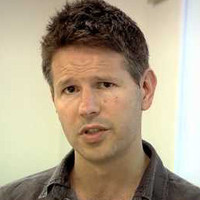

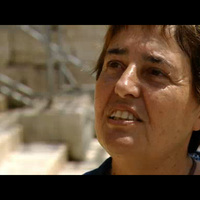
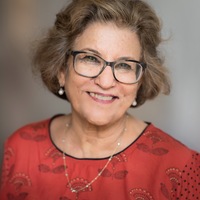
Uploads
Proceedings of scientific Works by marina kavtaradze
There are artists, whose work, together with their personality and related artistic image, influence a later generation and serve as inspiration for creating a range of artworks. Niko Pi-rosmanashvili is such a phenomenon. A number of music compositions belonging to different genres are related to his name (S. Nasidze’s Symphony No5, N. Svanidze’s Chamber Oratorio, A. Matchavariani’s Ballet, A. Chimakadze’s Music for a Play, etc.).A discourse presented in this paper reveals different aspects of Pirosmani’s relation to mu-sic: I – What was the "melosphere" surrounding him like; II – How was Pirosmani’s artistic image reflected in music.
field of political language using metaphors, affects the listener’s emotions by music and consciousness - by words,
and identifies it with nation and state.
Proceeding from the forms and dynamics of expression of these signs, three various generation composers were considered. These are the peaces by Giya Kancheli, Ioseph Bardanashvili and Zurab Nadareishvili, the adequate interpretation of the essence and significance of which is available only in the context of postmodernistic culture.
There are a number of compositions created in different languages, including foreign languages in early XIV-XVII, as well as in XX-XXI centuries. In the light of the set issue – “linguistic polyphony” showing different aspects of multilingualism in creative works of XX century composers, including Georgian composers (Gia Kancheli, Iosef Bardanashvili, Zurab Nadareishvili) will enable us to see specifically how the above-mentioned prominent artistic ideas of XX century are realized in them.
The paper aims to discuss the existence of two conservatoires during the First Democratic Republic of Georgia in Tbilisi and tries to find out cause and effect relationship between events and things. The present study is an attempt to see and interpret history of the second conservatoire in a new light, which was based on national interests.
on the ideological discourse and to reveal the key factors of particular historical epoch, which
played crucial role in the formation of musical culture, as a constituent of the totalitarian system.
The Soviet Government ensured the development of culture in which artists had to act only within
the boundaries of the forms and ideas permitted by the existing locked system. Art, as a representer
of Culture became an indicator of the anomalies generated by totalitarianism. The afore-mentioned
processes are discussed on the example of Georgian musical culture of the 1930s.
The paper, based on a report at the World Congress (2004), for the first time touches upon the attitude of Georgian academic music to religion in the 20th century.. Our age is characterized by the rebirth of religious consciousness, of spirituality in the various branches of art, including music. Religiosity as a quality of the human spirit belongs on the one hand to the spiritual and on the other hand to the moral sphere of man. Therefore, when discussing the religiosity of new Georgian music, I have in mind not only its genres and genres, but spirituality in general, which reflects eternal moral and ethical approaches. This is traditionally associated with religiosity and also appears in secular music.
Under the atheistic pressure of the Soviet Union, religion was a taboo. While 'spirituality' - reflecting the bright, the sublime, the eternal categories - was equated with forms and genres, traditional musical and cultural values emerged in the bosom of the general Christian and Georgian Orthodox Church. On the other hand, the secular consciousness of 20th century Georgian music expressed a traditional-religious experience that differed from the purely cultic-church one. This consciousness was characterized by an emotional perception of the religious experience, which arose in the core of personal ideas and in traditional terms went beyond the boundaries of religious aesthetics.
From the perspective of the 21st century, a relative periodization can be observed with regard to the relationship to religion in Georgian compositional work of the last century, which generally coincides with the processes taking place in the post-Soviet republics.
Papers by marina kavtaradze
who equally belongs to Israeli and Georgian musical culture.
From the national style standpoint, Bardanashvili’s style is a firstborn
of two cultures – Georgian and Jewish, and equally develops
traditions of these cultures within his own creative style. During his
first period of creative work, he establishes the attributes of national
Jewish culture on the foundation of Georgia’s cultural traditions. Whilst,
in Israel’s multi-cultural environment Bardanashvili naturally brings in
his creativity, which is characterized by different national traditions,
and synthesis of European, Asian and other valuable possessions.
Joseph Bardanashvili is one of the composers, where a postmodern
intertextuality and opposition –`Own-Another’s~ – in his creative
work transformed not into inter-style (among them national styles),
but at the level of relationships between historical types of culture -
characteristic to XXI century.
It is true that it was Israel to open its ways to Bardanashvili to
world recognition, however, Georgia remains as a second homeland
to the composer always emerging a feeling of nostalgia. “I don’t want
to be considered as a past composer. I hope to remain in Georgian
music” – these words belong to the composer, who continues
the 26-century-old tradition of relationships between Georgian-Jewish
cultures with his creations.
postmodern music for which unlike avant-garde music, is characteristic
mixing of old and new forms and categorically refuses the hermetic
sealing of creative process.
The goal of the article is to reveal stylistic traits conditioned by the
esthetics of post- modernism in modern Georgian music. Examples
are brought from the musical pieces of Gia Kancheli, Joseph Bardanashvili,
Zurab Nadareishvili and others.
The new semiotic essence of post- modern musical text with double
codes demanded from the authors ready-made materials of semantic
meaning, which accounts on its simultaneous perception on
different levels. In the article the problems like inter text, new eclectics,
double coding, play on styles and genres, pastiche etc are discussed.
problems and cataclysms; this is why, at various times, different mythological characters and plots dominate in artistic interpretation, which is allowed by the polysemy and variance of myth.
The story about Medea and the character of the princess of Colchis’,
distinguished by the power of psychological influence, has been the source
of inspiration for many artistic works. Starting from Euripides’ interpretation
and Ovidius’ Medeae Medea Forem (I will be Medea), up to Seneca’s
remark Medea fiam (I will become Medea) and Medea nunc sum (Medea
from now on) with which the future vision of this character has been programmed over the centuries.
For artists Medea is one of the most attractive and mysterious characters
in old Greek mythology and dramaturgy for her dual nature (half-goddess
and human).
The article attempts to outline how, over the time, the interest to Medea’s
character changes in music in the wake of literature and what the aplitude of its modifications is in the operatic genre. If the 17th-18th century operas
mainly emphasized Medea’s infernal-demonic features, main constituents
of external scenic intrigue, romantic interpretation of the idea of unattainable
happiness in love is emphasized in the 19th century. Psychologization
of Medea’s character, reinforcement of her personal initial, feminist motives
are observed in the 20th century operas. Paradigmatic changes of mythological plots are determined by the fact that literary versions and arrangements gained significance in the 20th century. This was also the case with Medea’s myth, which led to the fact that its perception became more “voluminous”.
The article discusses key issues related to the topic on the example of
the operas created in the 20th century and newest time by Darius Milhaud,
Aribert Reimann, Pascal Dusapin, John Fisher, Alexi Marchavariani.
There are artists, whose work, together with their personality and related artistic image, influence a later generation and serve as inspiration for creating a range of artworks. Niko Pi-rosmanashvili is such a phenomenon. A number of music compositions belonging to different genres are related to his name (S. Nasidze’s Symphony No5, N. Svanidze’s Chamber Oratorio, A. Matchavariani’s Ballet, A. Chimakadze’s Music for a Play, etc.).A discourse presented in this paper reveals different aspects of Pirosmani’s relation to mu-sic: I – What was the "melosphere" surrounding him like; II – How was Pirosmani’s artistic image reflected in music.
field of political language using metaphors, affects the listener’s emotions by music and consciousness - by words,
and identifies it with nation and state.
Proceeding from the forms and dynamics of expression of these signs, three various generation composers were considered. These are the peaces by Giya Kancheli, Ioseph Bardanashvili and Zurab Nadareishvili, the adequate interpretation of the essence and significance of which is available only in the context of postmodernistic culture.
There are a number of compositions created in different languages, including foreign languages in early XIV-XVII, as well as in XX-XXI centuries. In the light of the set issue – “linguistic polyphony” showing different aspects of multilingualism in creative works of XX century composers, including Georgian composers (Gia Kancheli, Iosef Bardanashvili, Zurab Nadareishvili) will enable us to see specifically how the above-mentioned prominent artistic ideas of XX century are realized in them.
The paper aims to discuss the existence of two conservatoires during the First Democratic Republic of Georgia in Tbilisi and tries to find out cause and effect relationship between events and things. The present study is an attempt to see and interpret history of the second conservatoire in a new light, which was based on national interests.
on the ideological discourse and to reveal the key factors of particular historical epoch, which
played crucial role in the formation of musical culture, as a constituent of the totalitarian system.
The Soviet Government ensured the development of culture in which artists had to act only within
the boundaries of the forms and ideas permitted by the existing locked system. Art, as a representer
of Culture became an indicator of the anomalies generated by totalitarianism. The afore-mentioned
processes are discussed on the example of Georgian musical culture of the 1930s.
The paper, based on a report at the World Congress (2004), for the first time touches upon the attitude of Georgian academic music to religion in the 20th century.. Our age is characterized by the rebirth of religious consciousness, of spirituality in the various branches of art, including music. Religiosity as a quality of the human spirit belongs on the one hand to the spiritual and on the other hand to the moral sphere of man. Therefore, when discussing the religiosity of new Georgian music, I have in mind not only its genres and genres, but spirituality in general, which reflects eternal moral and ethical approaches. This is traditionally associated with religiosity and also appears in secular music.
Under the atheistic pressure of the Soviet Union, religion was a taboo. While 'spirituality' - reflecting the bright, the sublime, the eternal categories - was equated with forms and genres, traditional musical and cultural values emerged in the bosom of the general Christian and Georgian Orthodox Church. On the other hand, the secular consciousness of 20th century Georgian music expressed a traditional-religious experience that differed from the purely cultic-church one. This consciousness was characterized by an emotional perception of the religious experience, which arose in the core of personal ideas and in traditional terms went beyond the boundaries of religious aesthetics.
From the perspective of the 21st century, a relative periodization can be observed with regard to the relationship to religion in Georgian compositional work of the last century, which generally coincides with the processes taking place in the post-Soviet republics.
who equally belongs to Israeli and Georgian musical culture.
From the national style standpoint, Bardanashvili’s style is a firstborn
of two cultures – Georgian and Jewish, and equally develops
traditions of these cultures within his own creative style. During his
first period of creative work, he establishes the attributes of national
Jewish culture on the foundation of Georgia’s cultural traditions. Whilst,
in Israel’s multi-cultural environment Bardanashvili naturally brings in
his creativity, which is characterized by different national traditions,
and synthesis of European, Asian and other valuable possessions.
Joseph Bardanashvili is one of the composers, where a postmodern
intertextuality and opposition –`Own-Another’s~ – in his creative
work transformed not into inter-style (among them national styles),
but at the level of relationships between historical types of culture -
characteristic to XXI century.
It is true that it was Israel to open its ways to Bardanashvili to
world recognition, however, Georgia remains as a second homeland
to the composer always emerging a feeling of nostalgia. “I don’t want
to be considered as a past composer. I hope to remain in Georgian
music” – these words belong to the composer, who continues
the 26-century-old tradition of relationships between Georgian-Jewish
cultures with his creations.
postmodern music for which unlike avant-garde music, is characteristic
mixing of old and new forms and categorically refuses the hermetic
sealing of creative process.
The goal of the article is to reveal stylistic traits conditioned by the
esthetics of post- modernism in modern Georgian music. Examples
are brought from the musical pieces of Gia Kancheli, Joseph Bardanashvili,
Zurab Nadareishvili and others.
The new semiotic essence of post- modern musical text with double
codes demanded from the authors ready-made materials of semantic
meaning, which accounts on its simultaneous perception on
different levels. In the article the problems like inter text, new eclectics,
double coding, play on styles and genres, pastiche etc are discussed.
problems and cataclysms; this is why, at various times, different mythological characters and plots dominate in artistic interpretation, which is allowed by the polysemy and variance of myth.
The story about Medea and the character of the princess of Colchis’,
distinguished by the power of psychological influence, has been the source
of inspiration for many artistic works. Starting from Euripides’ interpretation
and Ovidius’ Medeae Medea Forem (I will be Medea), up to Seneca’s
remark Medea fiam (I will become Medea) and Medea nunc sum (Medea
from now on) with which the future vision of this character has been programmed over the centuries.
For artists Medea is one of the most attractive and mysterious characters
in old Greek mythology and dramaturgy for her dual nature (half-goddess
and human).
The article attempts to outline how, over the time, the interest to Medea’s
character changes in music in the wake of literature and what the aplitude of its modifications is in the operatic genre. If the 17th-18th century operas
mainly emphasized Medea’s infernal-demonic features, main constituents
of external scenic intrigue, romantic interpretation of the idea of unattainable
happiness in love is emphasized in the 19th century. Psychologization
of Medea’s character, reinforcement of her personal initial, feminist motives
are observed in the 20th century operas. Paradigmatic changes of mythological plots are determined by the fact that literary versions and arrangements gained significance in the 20th century. This was also the case with Medea’s myth, which led to the fact that its perception became more “voluminous”.
The article discusses key issues related to the topic on the example of
the operas created in the 20th century and newest time by Darius Milhaud,
Aribert Reimann, Pascal Dusapin, John Fisher, Alexi Marchavariani.